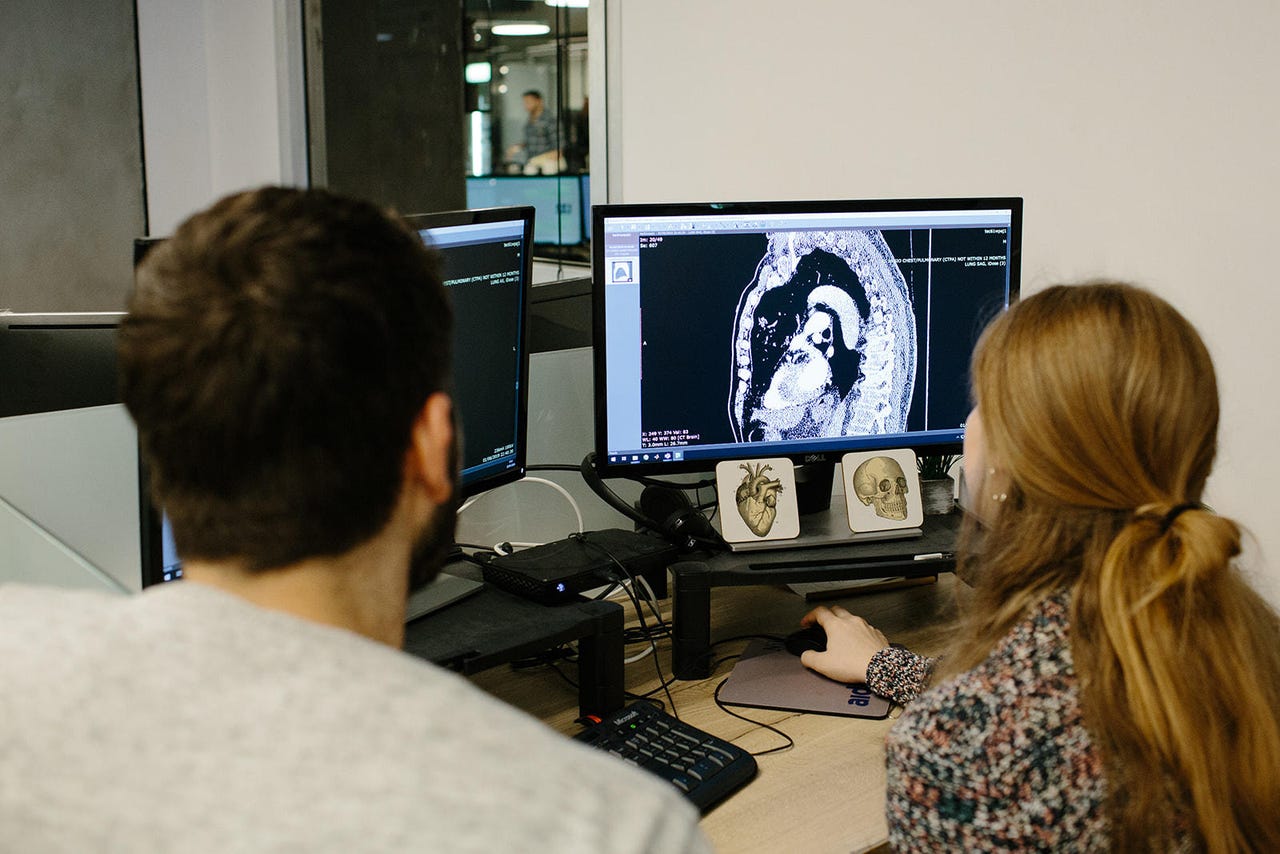Why these doctors are embracing AI to make triage decisions


There's been a tremendous amount of development around automation in healthcare, thrusting physicians and medical personnel toward a collision with automation that's long been familiar in industrial settings. Radiologists in particular are being confronted with a massive transformation as AI becomes more capable of interpreting scans.
Is this a threat to radiologists?
Discussions around the use of artificial intelligence to review CT scans are often framed as robots replacing humans. But instead of running scared of AI, Radiology Partners, the largest physician-owned practice in the US servicing 3,000+ hospitals, is running to embrace it. Specifically, the Radiology Partners is adopting Aidoc's radiology-AI platform to help triage patients so that physicians see and tend to the most urgent cases first.
So what's the deal? Are they throwing in the towel?
To figure out why Radiology Partners—which, conspicuously, is physician-owned and was valued in 2019 at $4 billion—is placing a big bet on AI, I reached out to the company's leadership. It turns out the path to embracing the technology wasn't always clear.
"Like most new things, the initial reaction to AI in radiology was mixed — a combination of fear, confusion, and excitement," says Dr. Nina Kottler, RP's Associate Chief Medical Officer for Clinical Artificial Intelligence. "In part because of excessive hype around the image recognition capabilities of AI as represented by AI experts and in the popular press, there was a great deal of fear that AI would replace radiologists."
That's a typical fear surrounding automation. So how did the organization overcome it?
"That fear has mostly resolved now that people had a better understanding of the realistic capabilities of AI," says Dr. Kottler. "Other emotions included an anxiety about the unknown — the 'black box of AI' and a resistance to an unfamiliar new technology. Some of that resistance was well placed — there are hurdles to creating and deploying a radiology AI algorithm successfully. So, a degree of skepticism for any new technology is healthy and important to ensure there is sufficient oversight in creating and deploying clinical algorithms. The skeptics who missed the point are those that haven't kept up with the latest literature or with the thoughts of experts in our field. Those who continue to be resistant don't recognize the value in AI, or think AI will replace physicians. As Curt Langlotz said, AI won't replace radiologists, but rads who use AI will replace those that don't."
That's the thrust of the company's argument for running toward the AI revolution as opposed to away from it.
"We embrace AI because we believe it adds value to the healthcare system overall, even beyond the specialty of radiology," Rich Whitney, CEO and Chairman for RP, tells me. "With our experience deploying AI algorithms we found that AI improves patient outcomes, decreases variability in follow-up and treatment recommendations, provides a back-up to ensure patient follow-up, decreases cost to the hospital, payor and patient, improves diagnostic accuracy and decreases physician burnout... a pretty impressive list of benefits! And we are only scratching the surface of what is capable. In the future physicians + AI will be providing precision care with guidance specific for the individual patient and predictive care to help prevent rather than simply treat disease. We don't see AI as a threat to radiologists, but rather an opportunity for the profession to add more value and elevate their role in the healthcare system."
What's clear is that this is just the beginning for AI in radiology and beyond.
"AI has the ability to affect every component of the imaging lifecycle," says Whitney. "In the future, AI algorithms will redefine the patient experience in scheduling radiology exams, decrease radiation dose and imaging duration, ensure exams don't need to be repeated by automatically protocolling based on identified pathology on the fly, provide the patient with a patient-friendly, interpretable version of their report incorporating relevant data from various other sources, and help patients schedule relevant follow-up imaging. Physicians will also notice a difference as a greater breath of quantified information will be available beyond that visible by the human eye. Segmentation and quantification of normal anatomy with population comparisons will provide imaging data that is akin to obtaining a blood laboratory panel, pathology will be measured volumetrically and tracked over time making it easier to determine the effect of treatments on disease, and risk stratification based on imaging findings will help clinicians prevent disease."
Adds Dr. Kottler: "With our new partnership with Aidoc and our leading market position interpreting approximately 1 in 10 imaging exams in the US, we are on the cusp of being able to offer this kind of game-changing value proposition to our partners. In the meantime, we have attacked the issue of resistance and lack of engagement through education. It is essential to not only ensure physicians have accurate information about the capabilities and limitations of AI, but also to provide them a vision for their role in an AI enabled future. Beyond investing in AI technology and the infrastructure to support it, we are investing in our radiologists to help shape that technology as they will be front and center in our AI enabled future. A future that holds great promise for patients and the healthcare system overall."